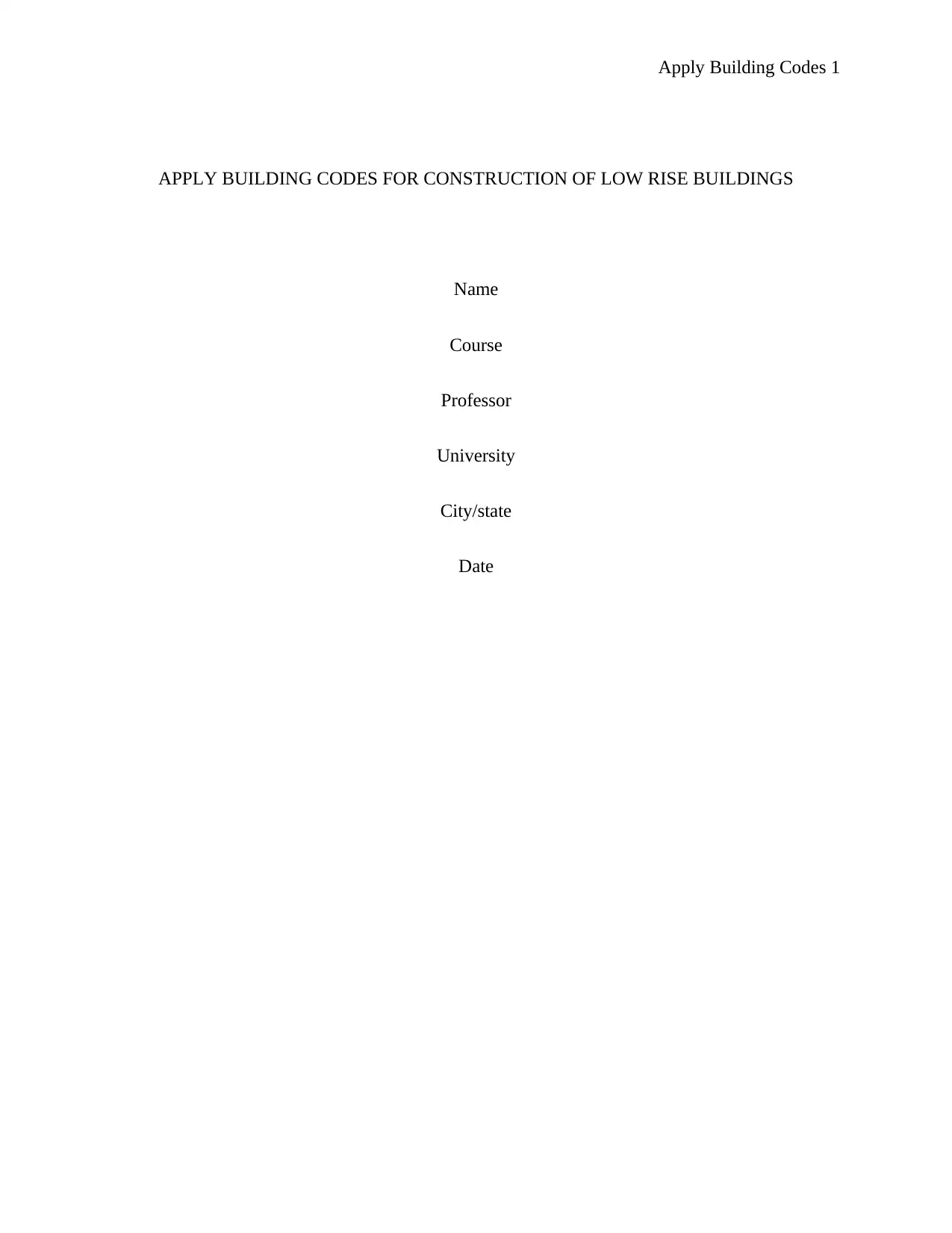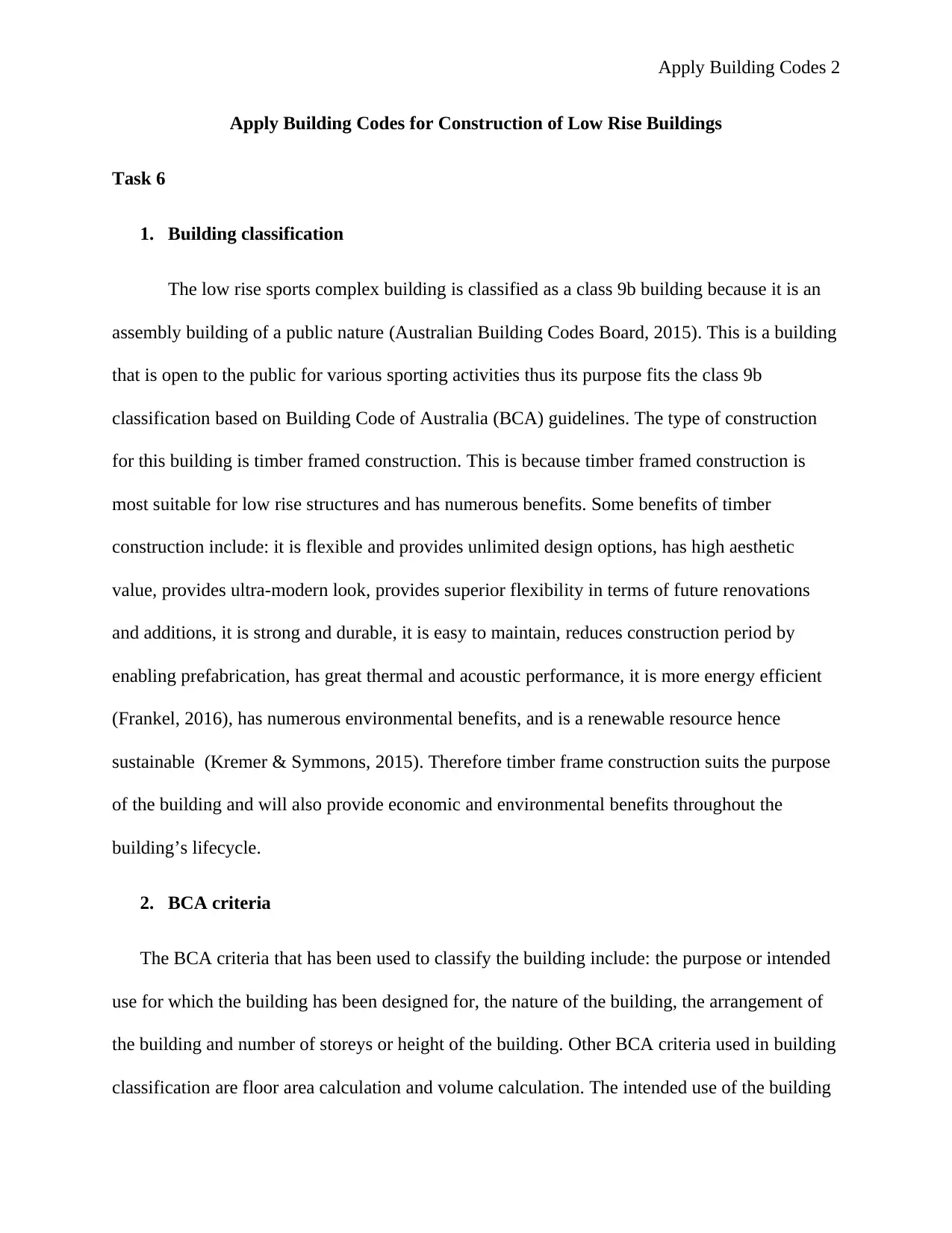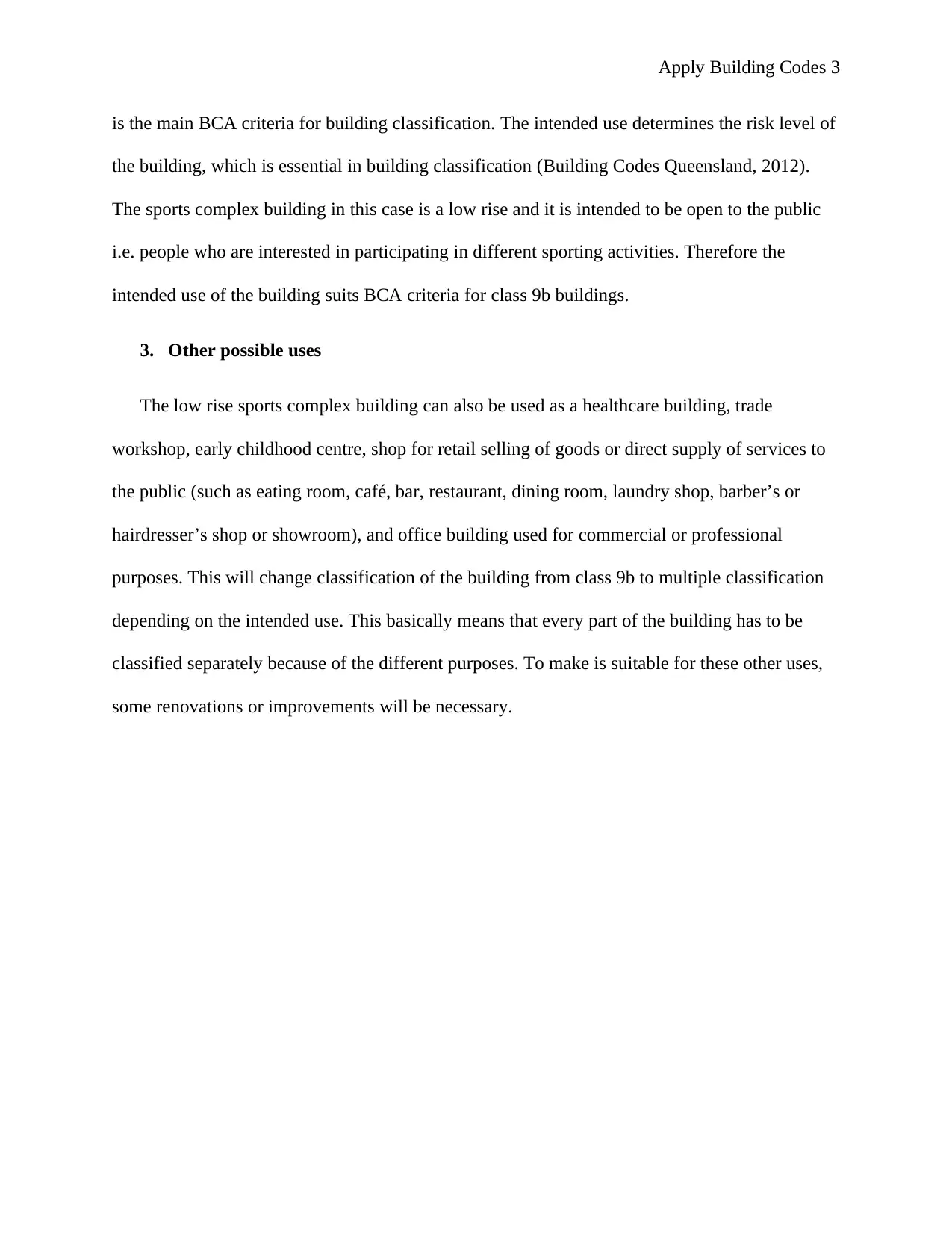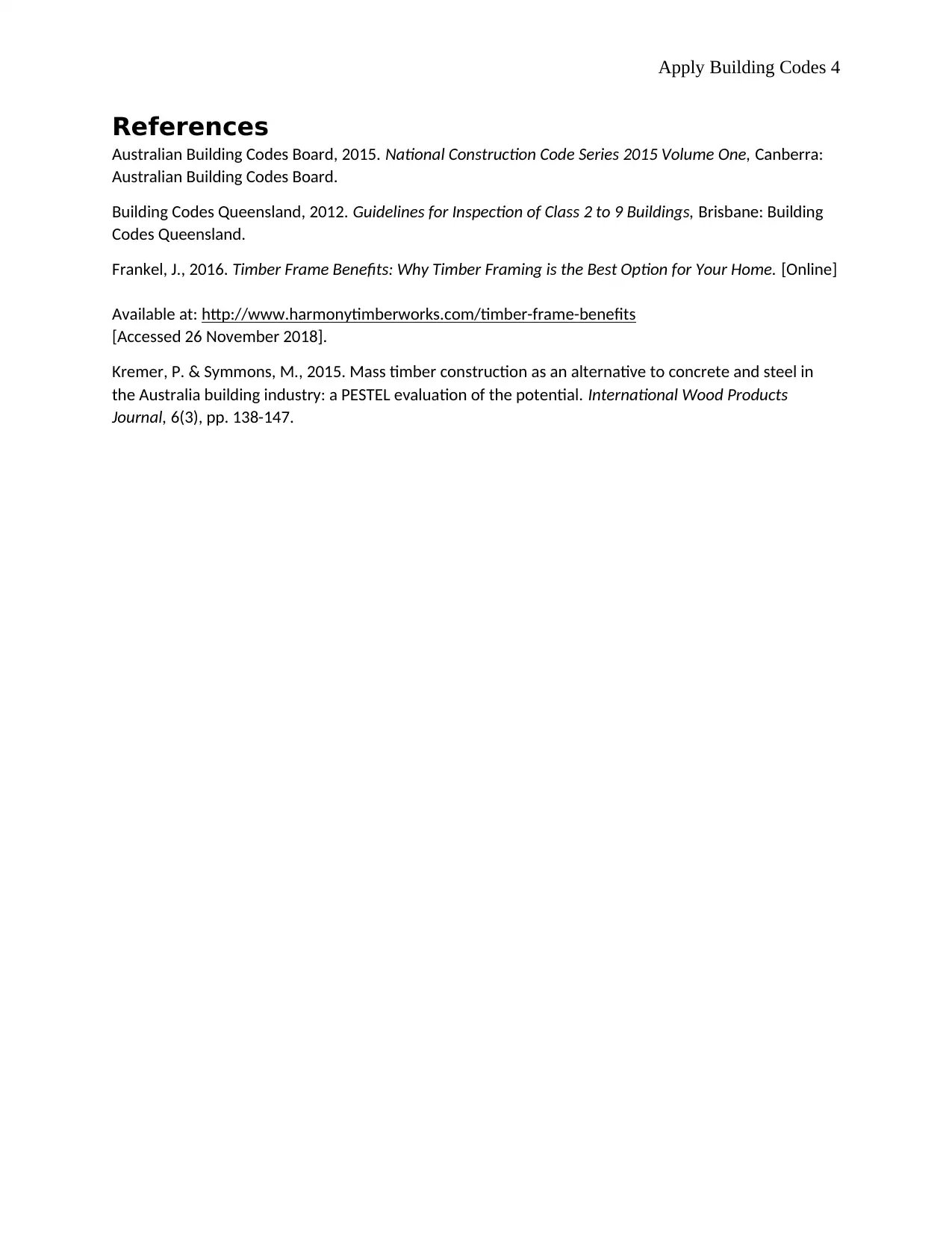Building Codes: Application for Low Rise Buildings - Course Name
VerifiedAdded on 2021/09/13
|4
|663
|75
Report
AI Summary
This report analyzes the application of building codes for a low-rise sports complex, specifically focusing on the classification and construction methods relevant to such a structure. The report classifies the building as a class 9b building, suitable for public assembly, and recommends timber-framed construction due to its numerous benefits. The report details the BCA (Building Code of Australia) criteria used for classification, emphasizing the building's intended use. Furthermore, it explores alternative uses for the building and how these would necessitate reclassification, considering the various factors that influence building codes. The report concludes by emphasizing the importance of adhering to building codes for safety and functionality, and provides relevant references to support the analysis.
1 out of 4











![[object Object]](/_next/static/media/star-bottom.7253800d.svg)